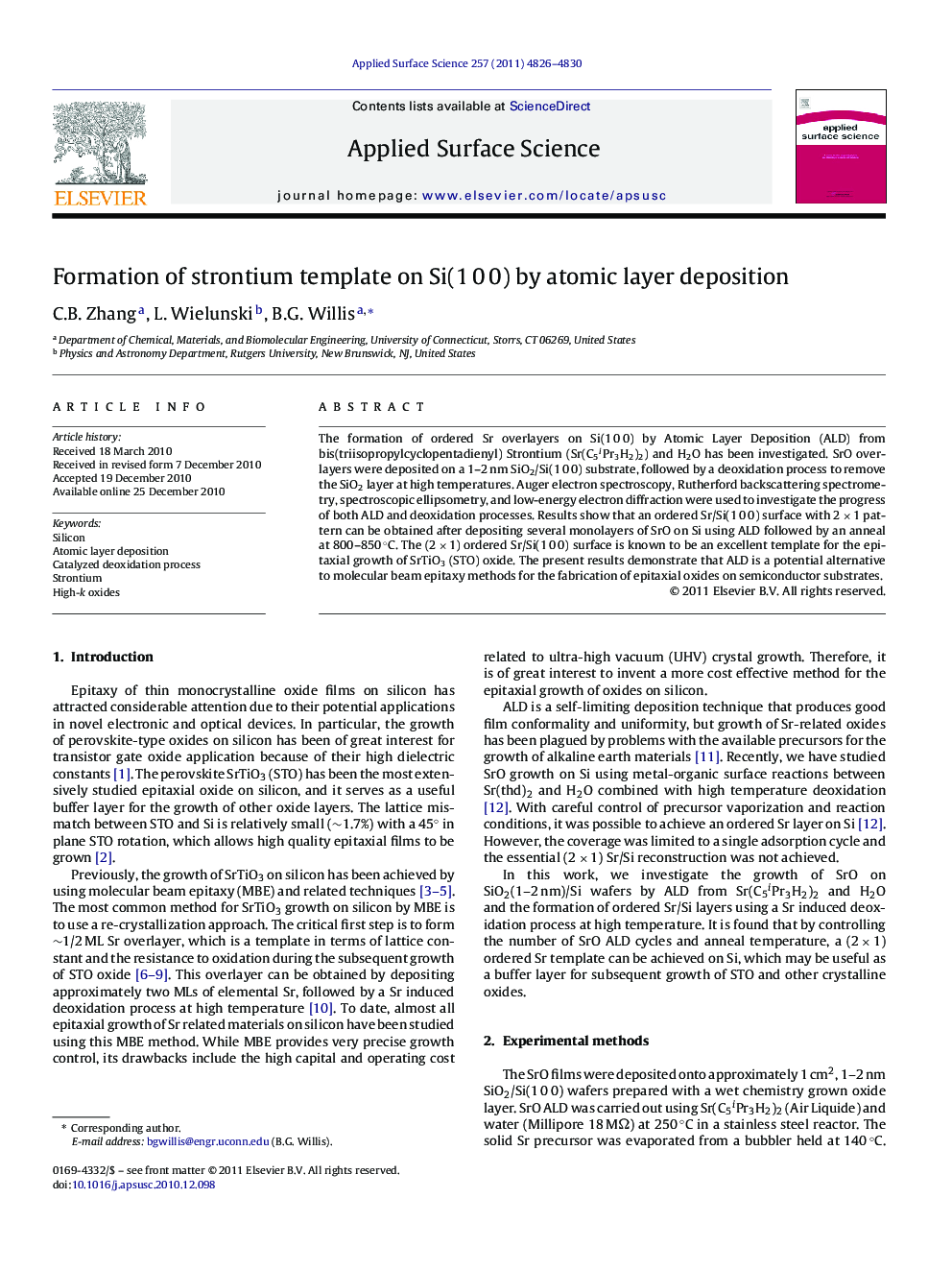| Article ID | Journal | Published Year | Pages | File Type |
|---|---|---|---|---|
| 5367809 | Applied Surface Science | 2011 | 5 Pages |
The formation of ordered Sr overlayers on Si(1 0 0) by Atomic Layer Deposition (ALD) from bis(triisopropylcyclopentadienyl) Strontium (Sr(C5iPr3H2)2) and H2O has been investigated. SrO overlayers were deposited on a 1-2 nm SiO2/Si(1 0 0) substrate, followed by a deoxidation process to remove the SiO2 layer at high temperatures. Auger electron spectroscopy, Rutherford backscattering spectrometry, spectroscopic ellipsometry, and low-energy electron diffraction were used to investigate the progress of both ALD and deoxidation processes. Results show that an ordered Sr/Si(1 0 0) surface with 2 Ã 1 pattern can be obtained after depositing several monolayers of SrO on Si using ALD followed by an anneal at 800-850 °C. The (2 Ã 1) ordered Sr/Si(1 0 0) surface is known to be an excellent template for the epitaxial growth of SrTiO3 (STO) oxide. The present results demonstrate that ALD is a potential alternative to molecular beam epitaxy methods for the fabrication of epitaxial oxides on semiconductor substrates.
Research highlightsⶠEpitaxial template layers for crystalline oxide heteroepitaxy on silicon have been grown by ALD. ⶠOrdered reconstructions of Sr/Si monolayers have been achieved by ALD with oxide desorption. ⶠCarbonate free SrO growth was achieved by ALD with cyclopentadienyl Sr precursor and water reactants. ⶠSilicate layers are proposed as intermediates for the formation of the epitaxial Sr layers. ⶠThe present results demonstrate that ALD is a potential alternative to molecular beam epitaxy methods for the fabrication of epitaxial oxides on semiconductor substrates.
